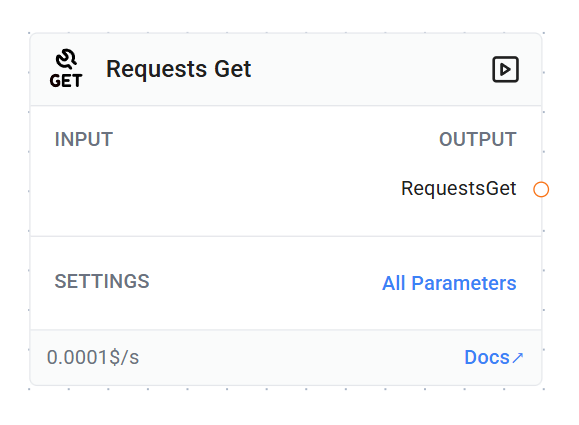Skip to main content
Node Details
-
Name: requestsGet
-
Label: Requests Get
-
Version: 1.0
-
Type: RequestsGet
-
Category: Tools
-
Description: Execute HTTP GET requests
Purpose
This tool allows agents or workflows to make HTTP GET requests to specified URLs, enabling the retrieval of data from web services or APIs. It can be used to fetch information dynamically as part of a larger process or decision-making system.
Base Classes
The node inherits from:
-
RequestsGet
-
Additional base classes from RequestsGetTool (not specified in the given code)
-
URL
-
Type: string
-
Optional: Yes
-
Description: The exact URL to which the GET request will be made. If not provided, the agent may attempt to determine it from an AIPlugin (if available).
-
Description
-
Type: string
-
Optional: Yes
-
Default: Provided by
desc variable (not shown in the given code)
-
Description: Acts as a prompt to guide the agent on when to use this tool. It helps in decision-making processes for tool selection.
-
Headers
-
Type: JSON
-
Optional: Yes
-
Description: Additional HTTP headers to be included in the request.
Initialization
The init method prepares the tool for use by:
-
Parsing the input parameters (URL, description, and headers).
-
Creating a
RequestParameters object with the provided inputs.
-
Instantiating and returning a new
RequestsGetTool with the prepared parameters.
Usage in AI Systems
This tool is likely part of a larger AI or automation system where:
-
An agent or workflow manager can dynamically decide when to use this tool based on the provided description.
-
The tool can be used to fetch data from web services as part of a larger task or information gathering process.
-
The flexibility in URL and headers allows for interaction with various APIs and web services.
Integration
The node is designed to be integrated into a larger system, possibly one that uses a component-based architecture for AI tools or workflows. The INode interface implementation suggests it’s part of a standardized node system within the larger application.
Extensibility
The design allows for easy extension or modification:
-
Additional parameters could be added to the
inputs array to support more complex HTTP requests.
-
The
init method could be expanded to handle more sophisticated setup procedures if needed.
Notes
-
The actual implementation of the HTTP GET request is encapsulated within the
RequestsGetTool class, which is not shown in this code snippet.
-
Error handling and specific behaviors of the GET request would need to be managed by the
RequestsGetTool implementation.


